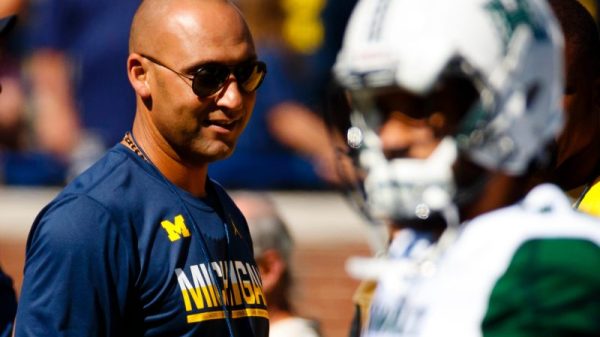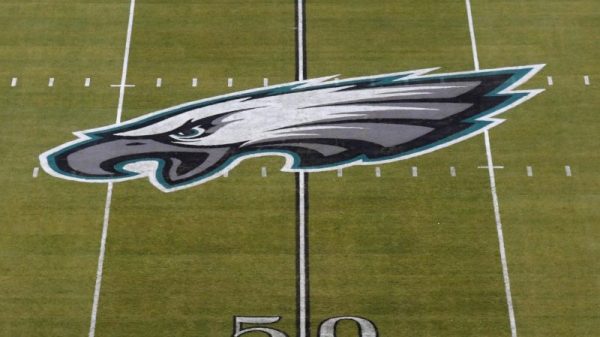After a brief-yet-incredibly-welcome break, the forces of conference realignment began churning again this week.
Late Wednesday night, news broke that the Pac-12, with Oregon State and Washington State as its only existing members, would be bringing in Boise State, San Diego State, Colorado State and Fresno State from the Mountain West, moves that were officially confirmed the following morning.
A merger of some sort had long been expected between the Pac-12s remnants and the Mountain West, the only other FBS conference with a membership rooted in the country’s western-most time zones. But after the two leagues failed to extend their football scheduling agreement beyond this season, the Pac-12 suddenly became a predator after spending the previous two years getting picked apart.
It’s a near-certainty the Pac-12, now up to six schools, won’t be staying pat, especially since the NCAA requires that a conference has at least eight members to qualify as an FBS league. Yahoo Sports reported that the Pac-12 bringing in the four Mountain West schools is the “first phase in a multi-phase expansion endeavor,” signaling that this conference shuffling is only just beginning.
Where might the Pac-12 turn as it continues its search to fortify its ranks? Here are eight potential additions that could make sense for the reconfiguring league:
Pac-12 Conference expansion candidates
Memphis
There’s perhaps no school not already in one of the Power Four conferences that’s as desirable as or due for a step up more than the Tigers.
They have a storied basketball program that regularly plays in front of large home crowds in a basketball-mad city. Their football program has won at least 10 games in four of the past nine full seasons and is located in a talent-rich part of the country. Financially, they have the backing of FedEx, which has pledged $25 million over the next five years to support Memphis’ NIL efforts.
The question may come down to whether a move is even worth it for the Tigers. The Pac-12 now isn’t the Pac-12 of yore and the conference doesn’t have an automatic berth in the College Football Playoff for its champion. Would it be worth leaving the American Athletic Conference for a league that’s only marginally better (if that) on paper?
Tulane
Memphis’ longtime conference mate – from its days in the Metro, Conference USA and now the AAC – would make sense for some of the same reasons.
After enjoying only sporadic bursts of football success since leaving the SEC in the 1960s, the Green Wave has gone 23-5 over the past two full seasons and appears well-positioned to continue that run with Jon Sumrall as coach. Tulane would open the Pac-12 up to a major city (New Orleans) and a private school with a wealthy alumni base.
The same question Memphis faces of whether a move to a western conference would make sense also applies to the Green Wave.
UNLV
Perhaps the biggest surprise of the group of Mountain West schools the Pac-12 added was that it didn’t include the Rebels.
UNLV has a men’s basketball program with a national championship to its name in the past 40 years and a rapidly improving football program that went 9-5 last season and is off to a 2-0 start in 2024, which included a 27-7 throttling of Houston. Though market size doesn’t matter as much as it did in previous rounds of realignment, Las Vegas is a top-40 television market that could help the Pac-12 try to make up for losing schools in Los Angeles, Seattle and the San Francisco Bay Area over the past several years.
UTSA
For a conference looking to fortify its football bona fides, getting a foothold in Texas isn’t the worst idea. In that state, there are few, if any, better non-Power Four options than the Roadrunners.
UTSA has enjoyed a meteoric rise in football since joining the FBS ranks in 2012, going 32-9 over the previous three full seasons under coach Jeff Traylor. Like many of the aforementioned schools, it’s located in a major media market, but unlike New Orleans or Las Vegas, San Antonio only has one professional team the university has to compete with for attention.
If the Pac-12 is committed to going into Texas, North Texas, located about 40 miles north of the Dallas-Fort Worth metroplex, could also make sense.
New Mexico
The Lobos represent the largest school in a state with no professional teams and are in a growing city, Albuquerque, that’s one of the 35 largest in the country.
Not only do they fit the conference’s geographic footprint, but they have a historically successful basketball program with a rabid and loyal local fan base that routinely ranks them among the top 20 programs in college basketball in attendance. Though its football program is underwhelming, with just two bowl appearances since 2008, the school recently hired coach Bronco Mendenhall, a proven winner in previous stops at BYU and Virginia.
Air Force
The Falcons’ football program has been a model of steady success since the early 1980s, with only nine losing seasons since 1982. That run includes 24 seasons with at least eight wins and 10 with at least 10.
Despite its location, it likely doesn’t bring the Denver media market into play for the conference – Colorado State already helps take care of that, anyway – but the idea of adding a service academy to the fold could be incredibly enticing for the university presidents tasked with making these decisions of who to invite.
Utah State
Though it’s the third-most prominent school in a smaller state that already has two Power Four schools in it, the Aggies have a passionate following and have been successful in both football, with 10 bowl berths in the past 11 full seasons, and basketball, which has gone to the NCAA tournament four times in the past six seasons and won the Mountain West in 2023-24.
The FCS powerhouses
For the sake of brevity, this designation includes North Dakota State, South Dakota State, Montana and Montana State.
The Dakota schools have combined to win 11 of the past 13 FCS titles. Montana has won two national championships since 1995 and made it to the title game last year. Montana State advanced to the championship game three years ago.
While there have been undeniable success stories, other schools have struggled with the FCS-to-FBS transition. For all their achievements, the four aforementioned FCS schools would be playing catchup financially to the four additions from the Mountain West, who all spend significantly more on football. Montana State, the biggest spender of the four FCS schools, shelled out only about half of what Fresno State, which had the smallest football budget of the four Mountain West defections, did according to the most recent US Department of Education data.
These four schools would have to weigh the question of whether a bigger payday is worth potentially sacrificing their status as perennial championship contenders.






























